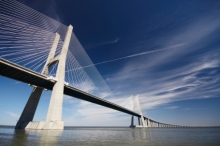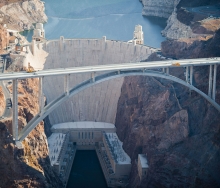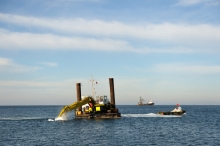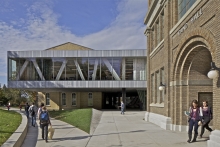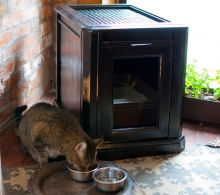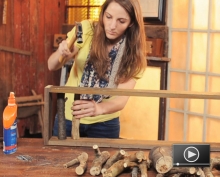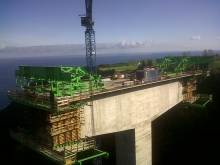Malm�, a city in southern Sweden that is connected by bridge to nearby Copenhagen, has undergone an amazing transformation over the last 20 years. What was a place at risk of becoming a post-industrial city in crisis has instead become a thriving inspiration for Sustainable Development. Apparently at least 20,000 international guests have been attracted to the city, not to experience Malm� as tourists, but to experience Malm��s approach to environmentally friendly architecture and urban development. Malm� is the flagship of urban sustainability for Sweden and has won numerous awards for this commitment from the United Nations, Worldwatch Institute, and others.
Most Popular from All Topics
Innovative Infrastructure: Smart Bridges
There are over 600,000 bridges in the United States and almost 13% have some sort of structural damage. Most bridges still require field methods to assess this damage, including visual inspection, dye penetrant testing, magnetic particle testing, and ultrasonic techniques. These field methods can miss structural problems or fail to catch them in time to prevent a catastrophe. In the case of the Minneapolis steel truss bridge that collapsed in 2007, resulting in 13 lives lost, the National Transportation Safety Board (NTSB) ruled that 16 of the gusset plates that connected the trusses failed. Smart bridge technologies are being implemented in the redesign, providing more efficient and real-time monitoring and inspection.
The Hoover Dam Bypass: A Modern Engineering Marvel
The Hoover Dam Bypass is being described as a remarkable, magnificent, impressive, spectacular, and monumental engineering feat. Completed in October 2010, this $240 million civil engineering project took nearly a decade of intensive planning and preparation, required coordinated efforts among a six-agency management consortium, and consisted of a three-prong emphasis on design, safety, and economic considerations.
Underwater Construction
The term �underwater construction� or �commercial diving� covers a wide array of activities. At the core, underwater construction is simply industrial construction that happens to take place under water. Activities vary greatly but include bridge inspection, building repair, repair of wastewater treatment facilities, and equipment installation.
Stair Safety
One of the most common worries among parents is that their children will fall on the stairs. In addition to installing gates and other protective devices, addressing any issues with the structure of the stairs themselves � especially the flooring around the stairway � can prevent injury.
A study published in March 2012 in the medical journal Pediatrics found that an estimated 932,000 children under the age of five were taken to hospitals for injuries received while falling down stairs between 1999 and 2008. In the subgroup of babies age one year or less, 25% were being carried by an adult at the time of the fall. As a homeowner, you should be aware of certain things to ensure that the stairs in your home are safe for you and your family.
Milstein Hall: How Old Meets New
A new academic facility by OMA supports Cornell University's College of Architecture, Art, and Planning (AAP) while bridging several historic campus buildings.
As if designing space for an architecture school weren�t a complicated enough feat, try maneuvering around four historic buildings. OMA�s New York office designed an extension to Cornell University�s College of Architecture, Art, and Planning in Ithaca, New York, which officially opened last October. The modern yet reverent structure consolidates these previously separated programs and promotes interdisciplinary interaction within its open and flexible studios, critique spaces, plaza, and auditorium.
DIY Litter Box Cabinet
Turn any small cabinet into a stylish way to hide your litter box, with a convenient removable top and cat door.
Upcycled Coat Racks
Find out, step by step, how to create two very different DIY coat racks using both natural and recycled materials. Watch {Re}habitat, Rachael Ranney�s online video series, to learn how adaptive reuse can add fun and function to your space.
I am constantly looking for ways to create new and inexpensive storage for my small home. Throughout the winter and spring months here in the Midwest, my house is always cluttered with a flurry of coats, gloves, and other cold weather gear. Installing a coat rack near your front door will add storage capacity to your entryway and can help you to clear up some of the chaos.
Top 10 Best Buildings in Movies
Check out some of our favorite buildings from our movie library!
Form Traveller System Bridge Construction: Out-spanning Traditional Methods
The use of form traveller systems offers significant cost savings for bridge construction projects throughout the world. We've partnered with Miguel Barreto�from�ConstruGomes of Portugal to highlight the key aspects of form traveller systems: how they offer cost advantages over traditional construction systems, in what situations they can best be utilized, and how they function.
How to Install a Kitchen Faucet
Installing or replacing a kitchen faucet is a job any homeowner can do. As with any home improvement project, a little planning to ensure that you have the proper faucet type and the right tools on hand will make for a smooth job.
Case Study: The Evolution of Miami Architecture
Picture Miami: a palm-dotted, pastel tableau with a bikini-required dress code. Then forget everything you think you know about Florida�s famous resort destination. Landing a commission in Miami has become a badge of honor among world-class architects. In particular, downtown Miami and Miami Beach host a growing collection of significant buildings connected by lively public spaces. The city�s success lies in its ability to reinvent itself while preserving itself. We explore the evolution of Miami's architecture through historical and economical lenses, the perspectives of influential practitioners, and the scopes of past and current projects.

